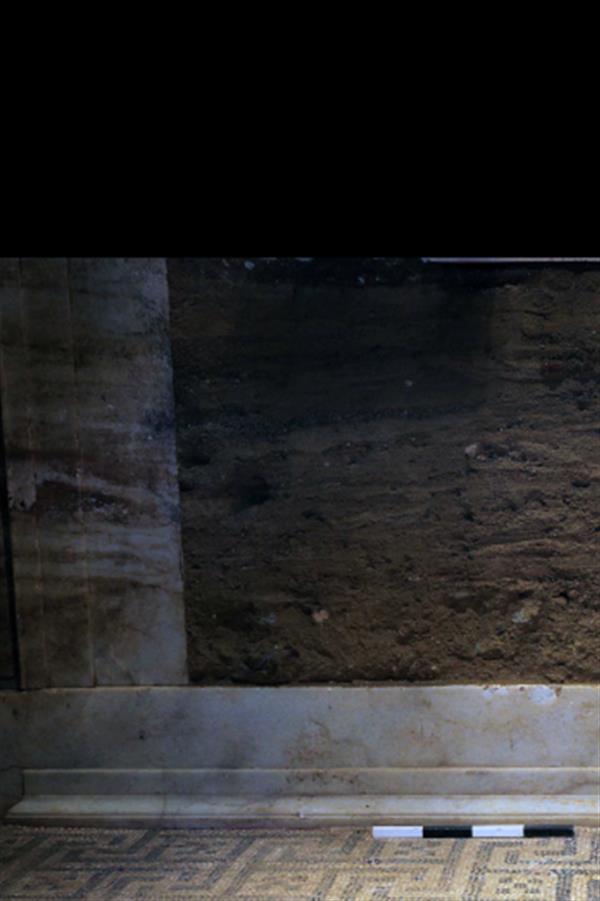photos www.capital.gr
Archaeologists have found stunning mosaics on the floor of the second chamber behind the Caryatids during excavation of the Amphipolis tomb.
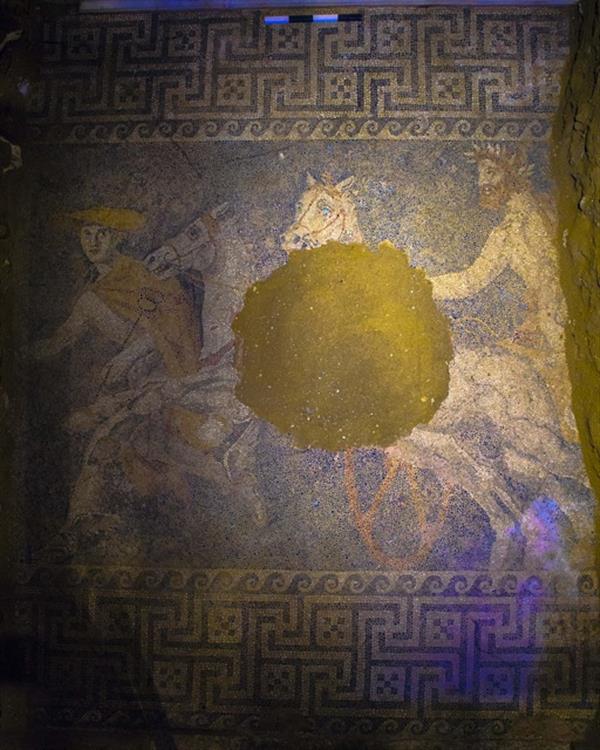
As stated in the announcement of the Ministry of Culture, the gradual removal of soil from the second chamber behind the Caryatids will continue until the flooring is reached to a depth of 6 metres below the dome. During the soil removal, part of the mosaic has been revealed that covers the entire surface of the chamber, 4.5 metres wide and 3 metres long.

The mosaic is laid with white, black, grey, red and yellow pebbles. The main image is surrounded by a 60-cm-wide decorative frame consisting of a double meander, squares and a wave-curl design. The background of the scene is in a grey-blue tinge.
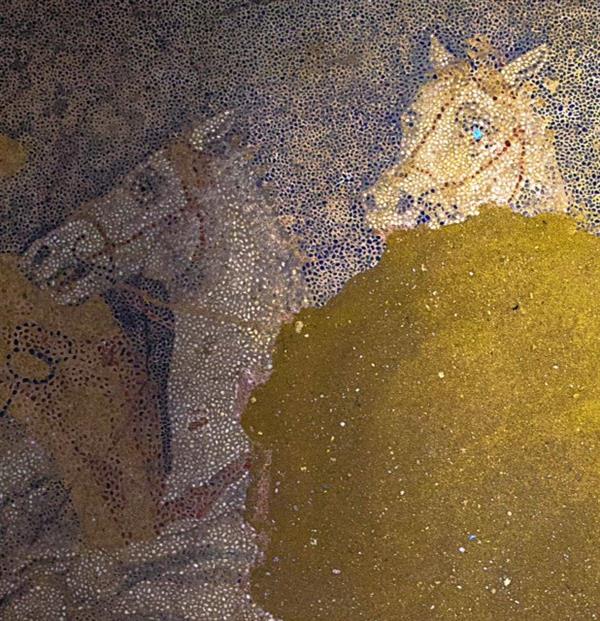
The central scene depicts a chariot in motion pulled by two white horses and driven by a bearded man with a laurel wreath on his head. In front of the chariot Hermes, the guide of souls, is depicted wearing a hat, a robe, winged sandals and holding a caduceus. The composition is oriented in an east – west direction.
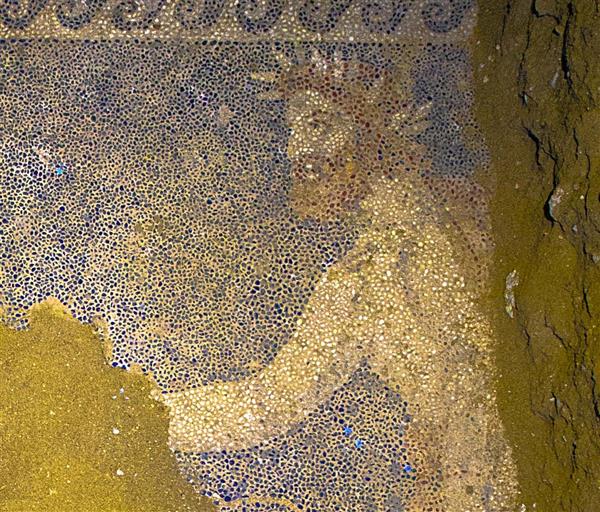
The scene features an exclusive technique in the depiction of the details of both the horses and the other forms, with the harmony of colours. The composition dates back to the time when the tomb was constructed – the last quarter of the 4th century BC. The mosaic is damaged in the centre, in the form of a 80 cm diameter circle. However, many parts of the damaged section have been found in the sandy finish. In the coming days, archaeologists will try to restore the mosaic in order for the original scene to be obtained as far as possible.
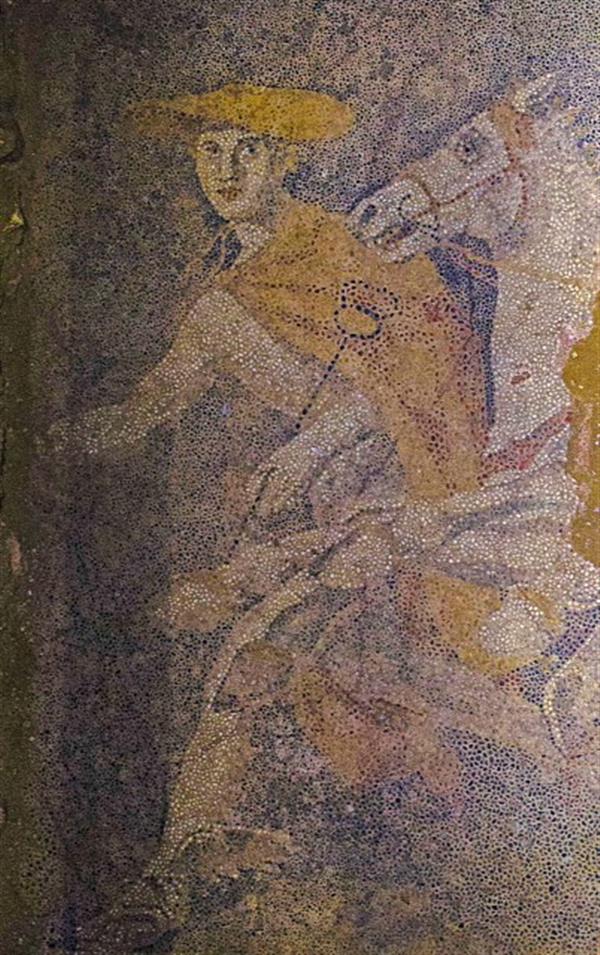
The mosaic has not been fully revealed in the east and west end, as excavations in this part are still underway. In the southern part of the mosaic, between the pedestals of the Caryatids, a limestone threshold has been discovered covered with white plaster. In the northern part the marble threshold decorated with Ionic elements at the bottom has been discovered, belonging to the door that leads to the third chamber.
Just below the door to the third chamber, two more parts of the marble door have been discovered.
